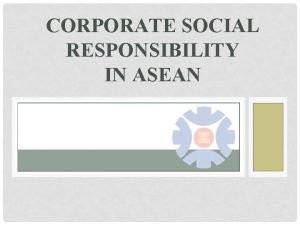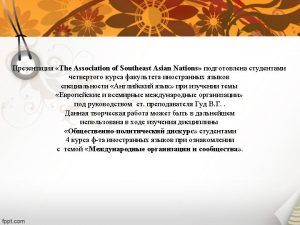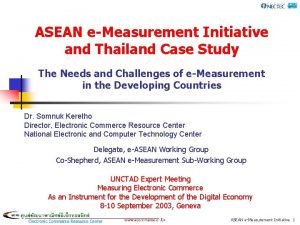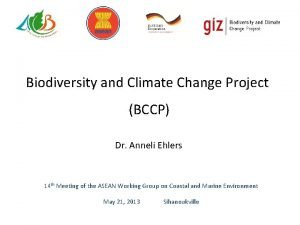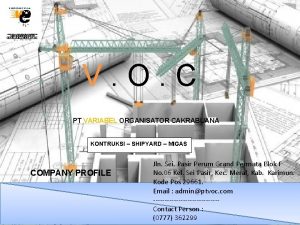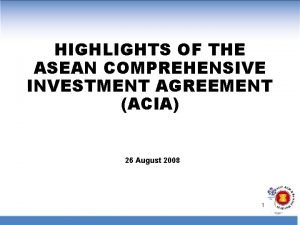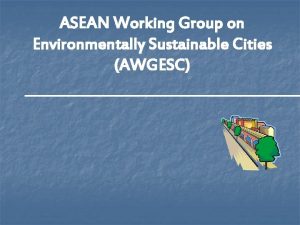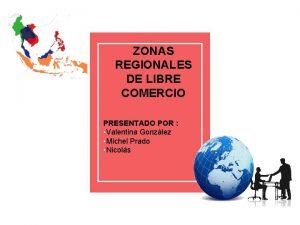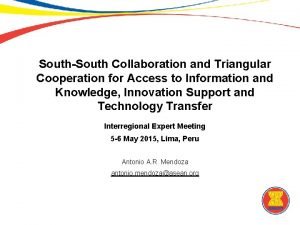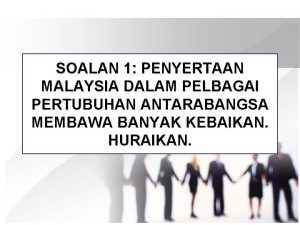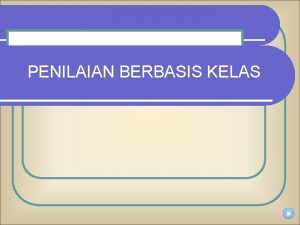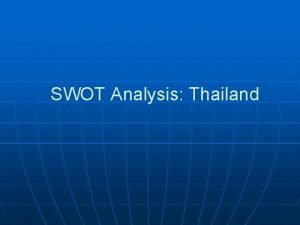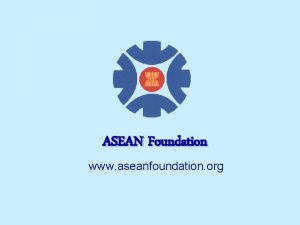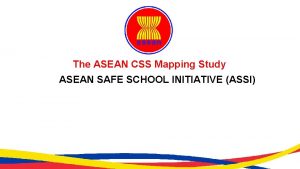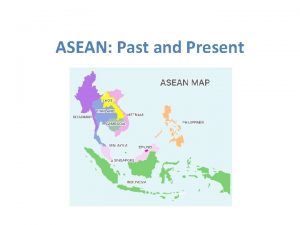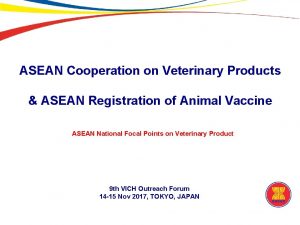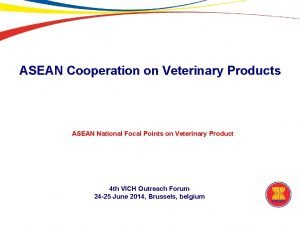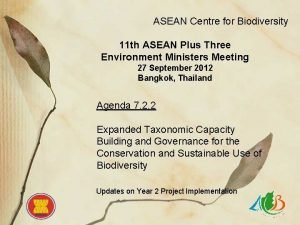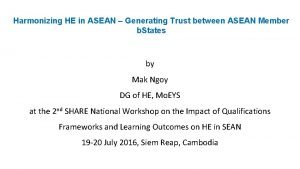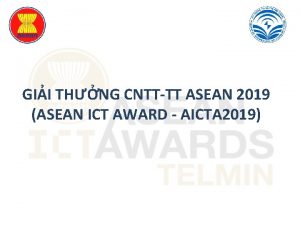Seminar in IB 5 ASEAN countries in the

Seminar in IB # 5 ASEAN countries in the Global Economy

ASEAN � � The Association of Southeast Asian Nations (ASEAN) is a geo-political and economic organization of ten countries located in SE Asia, which was formed on 8 August 1967 by Indonesia, Malaysia, Philippines, Singapore and Thailand. Since then, membership has expanded to include Brunei, Burma, Cambodia, Laos and Vietnam. Its aims include accelerating economic growth, social progress, cultural development among its members, protection of regional peace and stability, and opportunities for member countries to discuss differences peacefully. ASEAN covers a land area of 4. 46 million km², which is 3% of the total land area of Earth, and has a population of approximately 600 million people, which is 8. 8% of the world's population.

Economy of ASEAN � � In 2010, its combined nominal GDP had grown to US$1. 8 trillion. If ASEAN were a single entity, it would rank as the ninth largest economy in the world, behind the USA, China, Japan, Germany, France, Brazil, UK and Italy. GDP (PPP) 2010 - Total US$ 3. 084 trillion - Per capita US$ 5, 131 GDP (nominal) 2010 - Total US$ 1. 800 trillion - Per capita US$ 2, 995

ECONOMICAL INTEGRATION ASEAN - 15 European Union NAFTA APEC Free market (capital, labor) Trade Union MERCOSUR Intra - Custom Union Extra – Custom Union Intra - Trade agreement Extra - Trade agreement Currency Union

ASEAN and other Integration Unions Number of countries Year of forming GDP (nominal), trl $ GDP (PPP), trl $ GDP per capita, $ Population, mln ASEAN NAFTA EUROPEAN UNION MERCOSUR EURASEC 10 3 27 4 6 1967 1995 1960 1991 1996 1. 8 17. 1 16. 4 2. 6 1. 1 3 16. 1 14. 7 2. 9 1. 4 5. 100 38. 500 29. 800 14. 600 7000 600 457 501 267 207

Countries of ASEAN Country GDP nominal, bln, $ GDP (PPP), bln, $ GDP per capita, $ Unemployment, % Econ Growth 2011, % 1 Indonesia 845, 680 1, 124 4660 (#122) 6. 7 6. 4 2 Thailand 345, 649 616 9400 (#86) 1. 2 1. 5 3 Malaysia 278, 680 447 15600 (#55) 3 5. 2 4 Singapore 259, 849 315 60000 (#3) 2 5. 3 5 Philippines 213, 129 390 4050 (#126) 7. 2 4. 7 6 Vietnam 122, 722 299 3350 (#132) 2. 9 5. 8 7 Cambodia 12. 8 33 2200 (#147) 1. 7 6. 7 8 Burma 51 82. 6 1300 (#163) 4. 9 5. 5 9 Laos 7. 8 17 2600 (#139) 2. 5 8. 3 10 Brunei 16 21 50000 (#5) 3. 7 2. 8

ASEAN has emphasized regional cooperation in the “three pillars”, which are � security, � Socio-cultural integration, � economic integration. The regional grouping has made the most progress in economic integration by creating an ASEAN Economic Community (AEC) by 2015.

From CEPT to AEC A Common Effective Preferential Tariff (CEPT) scheme to promote the free flow of goods within ASEAN lead the ASEAN free trade area (AFTA). The AFTA is an agreement by the member nations of ASEAN concerning local manufacturing in all ASEAN countries. The next step is ASEAN Economic Community (AEC) with main objectives are to create a: � single market and production base � highly competitive economic region � region of equitable economic development � region fully integrated into the global economy Since 2007, the ASEAN countries gradually lower their import duties among them and targeted will be zero for most of the import duties at 2015.

Comprehensive Investment Area The ASEAN Comprehensive Investment Area (ACIA) will encourage the free flow of investment within ASEAN. The main principles of the ACIA are as follows � All industries are to be opened up for investment, with exclusions to be phased out according to schedules � National treatment is granted immediately to ASEAN investors with few exclusions � Streamlining of investment process and procedures � Enhancing transparency � Undertaking investment facilitation measures

Case study 1. Do we need ASEAN? In the past -Thailand development -Thailand investment attractiveness -Asian crisis (1997), World economic crisis (2008) In the present time - Thailand regional role -Investments in Thailand -International collaboration In the future -AEC (ASEAN in 2015) -Common currency -Common Central bank -Common political center Group 1 Positive role Negative role Positive role Group 2 Negative role Positive role Negative role

International business conditions in ASEAN countries Governance Custom regime Taxation regime Migration / labor regime Investment / financial regime • Registration of business • Licenses, standards, certification • Strict and regulation • Import - export fees • Import – export quotas, limitations • Import-export requirements • Number of taxes • Taxes rates, preferences • Taxation procedures • Labor laws, minimal wages • Migration formalities, labor policy • Foreigners employment • Financial control, finance international flows • Bank’s control • Insurance market control

Starting business in ASEAN Paid-in Min. Capital (% of income per capita Rank Procedures (number) Time (days) Cost (% of income per capita) 86 134 15 105 13. 5 0. 0 Cambodia 138 170 9 85 128. 3 37. 0 Indonesia 126 156 9 47 21. 5 53. 1 Laos 163 88 7 93 8. 9 0. 0 23 111 9 17 17. 5 0. 0 Philippines 134 155 16 36 22. 1 6. 0 Singapore 1 4 3 3 0. 7 0. 0 Thailand 16 97 7 32 6. 9 0. 0 Vietnam 90 100 9 44 12. 1 0. 0 Brunei Malaysia

Registering property in ASEAN Rank Procedures (number) Time (days) Cost (% of property value) Cambodia 118 111 7 7 298 56 0. 6 4. 3 Indonesia 96 6 22 10. 9 Thailand 72 59 109 15 18 5 5 8 3 2 98 48 39 5 2 1. 1 3. 2 4. 8 2. 8 4. 3 Vietnam 43 4 57 0. 6 Brunei Darussalam Lao PDR Malaysia Philippines Singapore

Getting credit in ASEAN Getting Credit Rank Brunei Darussalam Cambodia Indonesia Lao PDR Malaysia Philippines Singapore Thailand Vietnam 116 96 116 152 1 116 8 64 21 Getting Credit - Depth Getting Credit - Public Strength of legal of credit information registry coverage (% rights index (0 -10) index (0 -6) of adults) 7 8 3 4 10 5 8 0 0 4 0 6 3 4 5 5 0 0 25. 2 0 62 0 0 0 26. 4

Investors protection in ASEAN Protecting Investors - Extent of disclosure Extent of director Ease of shareholder Rank index (0 -10) liability index (0 -10) suits index (0 -10) Brunei Darussalam 120 3 2 8 Cambodia 74 5 9 2 Indonesia 44 10 5 3 Lao PDR 182 2 1 2 Malaysia 4 10 9 7 Philippines 131 2 2 8 Singapore 2 10 9 9 Thailand 12 10 7 6 Vietnam 172 6 0 2

Taxation in ASEAN Brunei Darussalam Cambodia Indonesia Lao PDR Malaysia Philippines Singapore Thailand Vietnam Paying Taxes Rank Paying Taxes Payments (number per year) 17 51 134 122 39 127 4 94 129 15 39 51 34 12 47 5 23 32 Paying Taxes – Paying Taxes Time Total tax rate (hours per year) (% profit) 144 173 266 362 145 195 84 264 941 17. 3 22. 5 37. 3 33. 7 45. 8 25. 4 37. 4 33. 1

International trade regimes in ASEAN Trading Across Borders Documents to export (number) Brunei Cambodia Indonesia Lao PDR Malaysia Philippines Singapore Thailand Vietnam 6 9 4 9 6 7 4 5 6 Trading Across Borders Time to export (days) Trading Across Borders - Cost to export (US$ per container) 25 630 22 732 17 644 48 1, 860 17 450 15 630 5 456 14 625 22 555 Trading Across Borders Trading Across Documents to Borders - Time import to import (days) (number) 6 10 7 8 4 5 8 20 26 27 50 14 14 4 13 21 Trading Across Borders - Cost to import (US$ per container) 708 872 660 2, 040 450 730 439 795 645

Total rank Rank in 2011 Singapore Thailand Malaysia Brunei Vietnam Indonesia Philippines Cambodia Laos 1 16 23 86 90 126 134 138 163

Case study 2 What to do for further development? � Group 1 Property registration � Group 2 International trade � Group 3 Taxation � Group 4 Getting credit and investors protection
- Slides: 19
